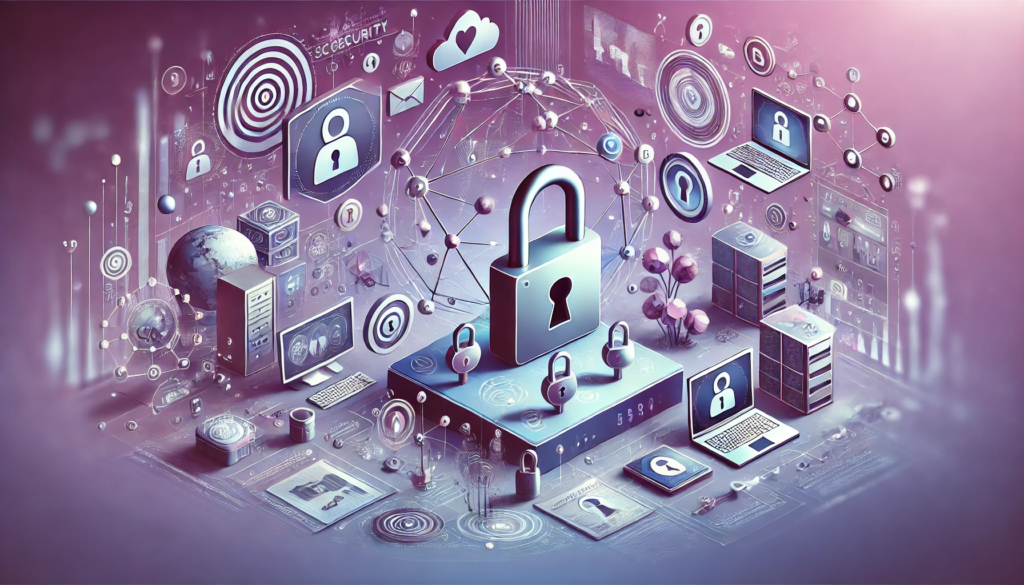Credential Management: Safeguarding Your Organization’s Security
Credential management is more than just giving employees a company login to do their work; it’s also a key player in successful cybersecurity. From playing a role in keeping a company up and running to keeping sensitive information out of malicious hands, credential management is a cornerstone of a company’s digital health.
What Is Credential Management?
Credentials are the unique identifiers used to verify a person’s identity and authority level when logging into an organization’s system or equipment. They can range in form or type, including passwords, certificates, tokens, or keys. In some cases, accessing a system may require a combination of these things.
Beyond being essential for identity authentication, credentials are necessary to carry out specific workplace tasks. Each person’s credential typically comes equipped with a certain level of permissions or access to an organization’s internal workings and information so they can do their job. The level of permission or access is typically based on the credential holder’s position and job needs and is liable to change as a person’s responsibilities within an organization change.
Credential management is the practice of safely and securely making, sharing, updating, and monitoring these credentials for your organization.
Why Is Credential Management Important?
Since credentials give access to an organization’s systems and sensitive information, effective credential management is essential not just in daily operations but also to a company’s overall cybersecurity. Proper management protects your organization from cyberattacks and other malicious activities that can jeopardize your clients or customers’ personal information and the functioning of an entire business network.
Credential management is essential in a vast range of situations, from workplaces and schools to private businesses and government organizations. It has also become increasingly important (and challenging) with remote work.

What Does Credential Management Encompass?
From following password best practices to implementing an effective credential management system, there are many elements to consider. Some things are done at an admin or IT level, while individual employees can take on others.
Below are some of the most essential components of credential management and why they’re important to overall operations.
Following Password Best Practices
One of the things that can be done at the individual level is educating an organization’s employees and ensuring they follow password best practices, such as using unique, high-quality passwords.
Such practices typically include:
- Making your password longer than eight characters
- Using a combination of letters, numbers, and special characters
- Making each password unique (never reuse a password for another login or personal account)
- Never sharing passwords with others
- Never updating a default password
A strong password that follows these rules is much harder to guess or use to break into multiple systems or logins.
Using Multi-Factor Authentication
Multi-factor authentication ensures the identity of a user by requiring two separate ways of confirming a person’s identity. You’ve likely encountered this well beyond using a work or school account for accounts linked to your sensitive personal data (like logging into your online banking account), and it is even an option for most email or social media accounts.
Since this login method requires more than one way of authenticating the person, this is considered a much more secure practice for preventing fraudulent or malicious acts.
Providing Cybersecurity Training
Of the many successful cyberattacks that have taken place, over 80% were traced back to mistakes made by people, like employees who unknowingly give away their system credentials. A common method used by hackers or people with ill intent to gain this information is phishing emails that lead to malware being installed on their device or their information being entered into an unsecured system.
While there are many ways to address cybersecurity, offering employees training or information to help spot cyberthreats like phishing emails is another effective way to reduce these potentially costly mistakes.
Following the Zero-Trust Security Model
The Zero Trust (ZT) approach, as the name implies, is to always ensure network users and devices are verified rather than trusting that they’re harmless if they’re within the network. This approach requires authorizing all devices on a network in order to operate and verifying credentials to access specific data types before each use.
This approach also encompasses giving the minimum amount of access possible for someone to complete their job or limited time access to certain types of information. This keeps access to sensitive information or essential data as minimal as possible so that access to information is limited even if an employee’s credentials are stolen.
Removing Inactive Accounts
When an organization has accounts that are no longer in use after a person has moved on from their job, these accounts must be removed from a network. If not, these accounts can be a gateway to the rest of the network since they’re unmonitored.
Tracking & Auditing User Activity
Tracking and auditing user activity isn’t just for keeping tabs on productivity and ensuring employees aren’t spending their work days streaming shows or gambling online by ensuring they don’t go to the website or websites related to these activities. Tracking and auditing users can be made specific to the activities associated with sensitive information to ensure it’s being used in the intended way by the intended people.
Implementing a Credential Management System
A credential management system (CMS) is typically software that allows high-level management of an organization’s credentials. It can allow for seamless monitoring of active and inactive accounts, auditing user activities, updating permissions and access, and generally make it easier for IT and admin teams to maintain network security.
Summing It Up
From the seemingly small act of crafting a strong password to the all-encompassing implementation of credential management software, taking the time to safeguard employee credentials at all levels adds up. It allows businesses and organizations to continue operating as they should while minimizing cyberthreats and risks — keeping every aspect of the company, its employees, and its clients secure.









